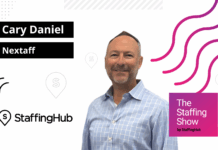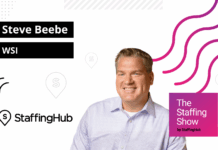
Key takeaways:
- Strategic tech investment is paramount for growth: Fast-growth agencies are not just spending on technology, they’re significantly increasing their budget allocation and prioritizing new software solutions.
- AI is no longer optional: AI adoption is surging, and agencies are leveraging it to enhance candidate and recruiter experiences, improve matching, and streamline processes.
- Shift away from traditional job boards: Successful, growing agencies are drastically reducing their spend on traditional job boards, suggesting these are becoming less effective for talent sourcing.
Staffing agency leaders are facing an unpredictable 2025 market, and the smart ones know that throwing money at technology isn’t enough anymore. You need to be strategic about where every dollar goes. The latest 2025 State of Staffing Benchmarking Report shows exactly where fast-growth agencies are placing their bets, and the results might surprise you.
Strategic tech investment is non-negotiable
Fast-growth agencies are already buying technology, not just talking about it. While 37% of agencies overall plan to purchase new software solutions in the next 12 months, that number jumps to 62% for fast-growth agencies.
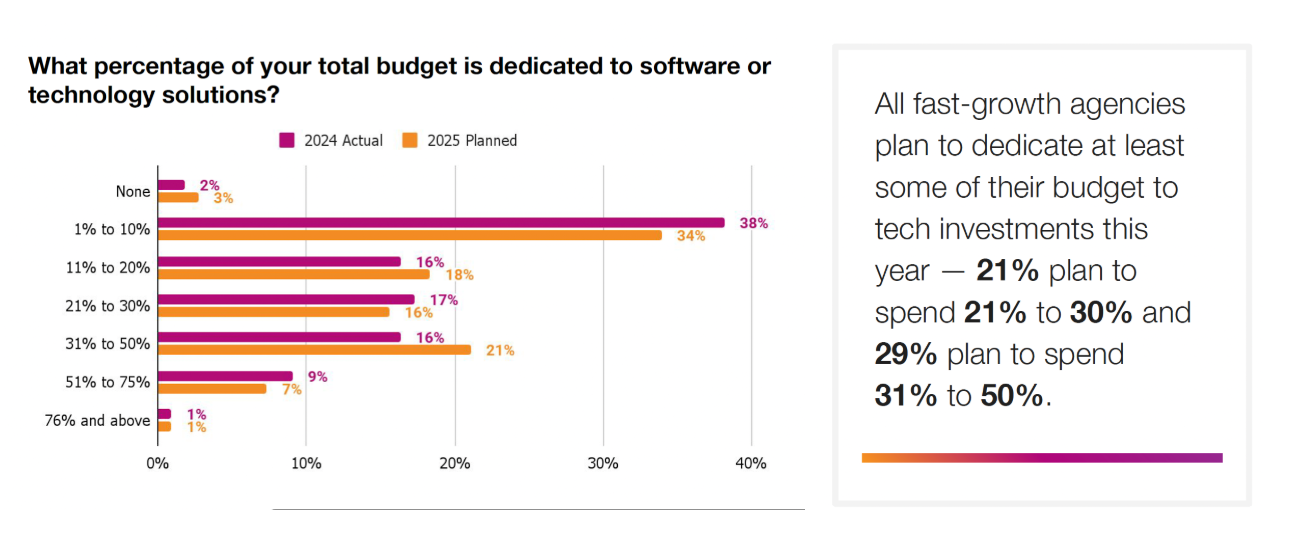
The budget numbers tell the real story. All fast-growth agencies plan to dedicate a portion of their budget to tech, with 21% planning to spend 21 to 30% and another 29% allocating 31 to 50% of their total budget to software and technology in 2025. This isn’t about keeping up with trends. It’s about pulling ahead of the competition.
| Ready to see the complete data behind these insights? Download the full 2025 State of Staffing Benchmarking Report to get the detailed breakdown of what’s working for top-performing agencies. |
AI adoption accelerates across the industry
Artificial intelligence has moved from experimental to essential. The report shows 61% of agencies now using AI for business applications, up from 48% last year.
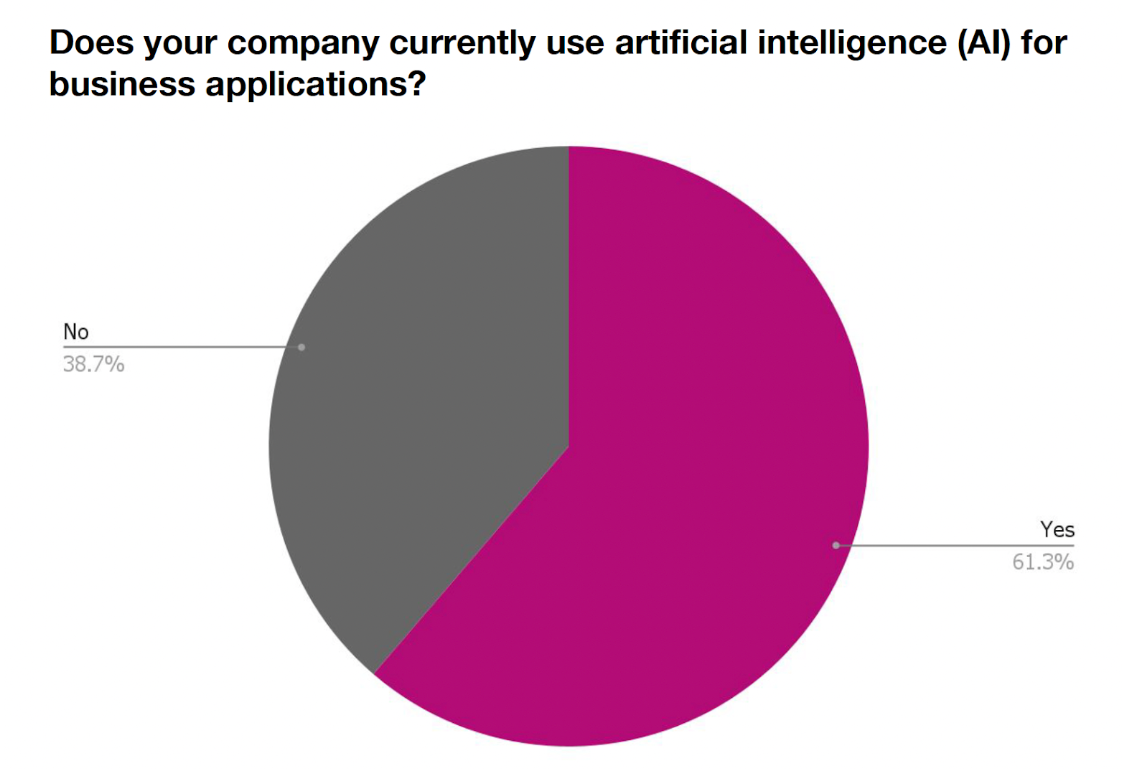
Smart agencies are putting AI to work enhancing candidate and recruiter experiences (45%) and improving candidate matching (38%). The most popular applications include conversational AI (55%), resume parsing and database cleanup (45%), and generative AI (44%).
For agencies not yet using AI, time is running short. Nearly three-quarters (74%) of agencies not currently using AI plan to adopt it in 2025, focusing mainly on candidate communication and client matching.
Job board spending plummets as agencies find better options
The shift away from traditional job boards tells a powerful story. The average monthly spend on job boards dropped from $16,388 to $7,192. More telling: agencies that experienced no revenue growth last year spent considerably more on job boards ($178,440 annually) compared to growing companies (less than $48,000 annually).
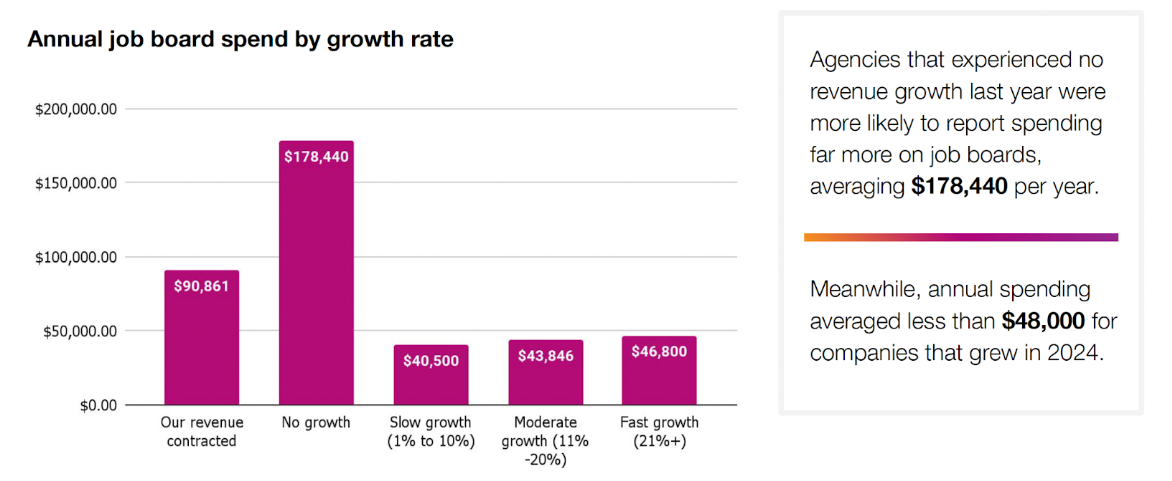
Growing agencies have clearly found more effective, technology-driven ways to source talent while moving away from costly traditional methods.
Automation and referrals drive new efficiency standards
Beyond AI, agencies are prioritizing automation to streamline operations. Recruiting and marketing automation (46%) and chatbots/AI assistants (35%) top the list for new software purchases, especially among fast-growth agencies.
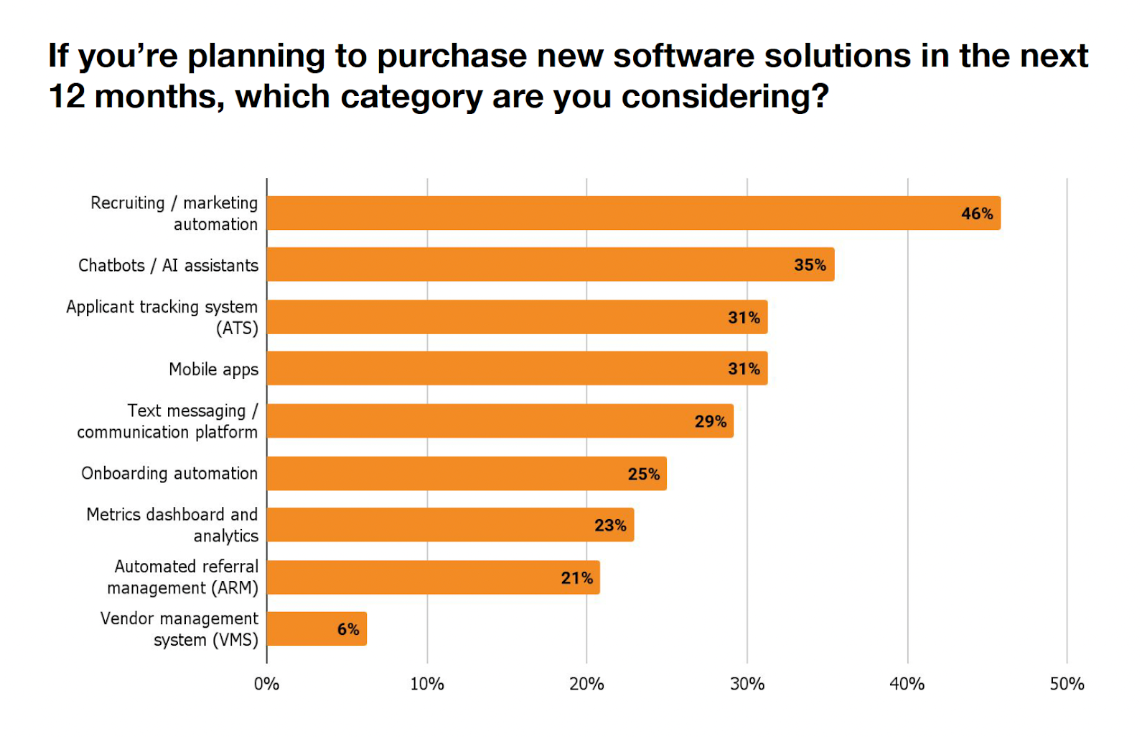
Referrals also remain critical to success, with 71% of fast-growth agencies calling them “extremely important.” Automated referral management platforms are gaining traction among agencies that saw revenue growth.
The message for staffing agency CEOs is clear: strategic investment in technology, particularly AI and automation, separates winners from those treading water in 2025. The agencies winning are moving their money from outdated channels into smart tech solutions that actually deliver results.
Want the complete picture of how your agency can adapt and thrive? Download the full 2025 State of Staffing Benchmarking Report today. The data shows exactly what works and what doesn’t.


